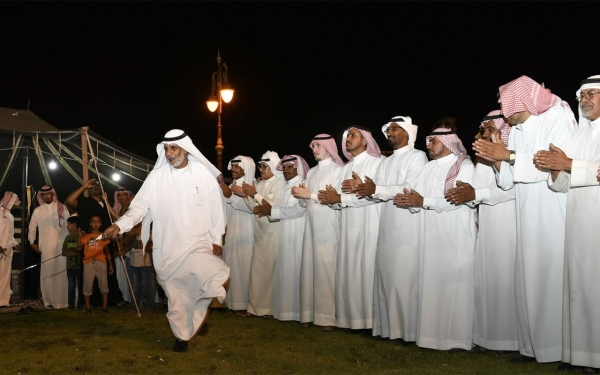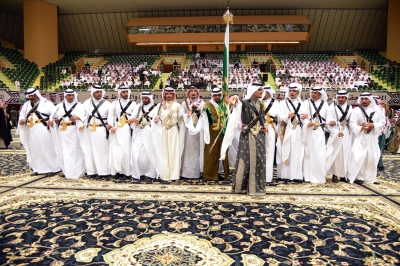
Similar to most traditional dances in the Kingdom, al-Daha originated from war songs. The northern al-Daha is a prominent war dance in the north of the Kingdom. Its performance is limited to men, due to its common association with warrior combat perpetrations. Performing the dance reflects combat prowess artistically.
Performing al-Daha Dance
The traditional northern al-Daha war song consists of sharp sounds and grunts from performers that resemble preparation for battle or unusual combat skills. These sounds are strikingly similar to the roar of a lion. The song relies solely on the strength of the human voices and serves as a valuable reference to the ancient ritual of vocal combat preparation.
Rituals of al-Daha Dance
Al-Daha reflects the warriors’ victory ritual and celebration by throwing a feast after the battle; the dance follows the standard pattern of class distribution and the performer’s maneuvers between them which is very common in most Saudi dances. Similar to traditional dances in the Kingdom, al-Daha is performed by one or two rows of performers engaging in a continuous maneuver with a single performer wearing a Mishlah, which is an essential part of this performance.
Al-Daha Dance in Saudi culture
Although al-Daha dance extends into most cultures in the northern regions, al-Daha of al-Jawf Province is the most symbolic. It is a major artistic form in the province’s national holiday celebrations. It has the largest audience at the National Saudi Day celebrations, national festivals, traditional arts competitions in Souk Okaz, and al-Janadriyah Cultural and Heritage Festival.
Related quizzes
Related articles


